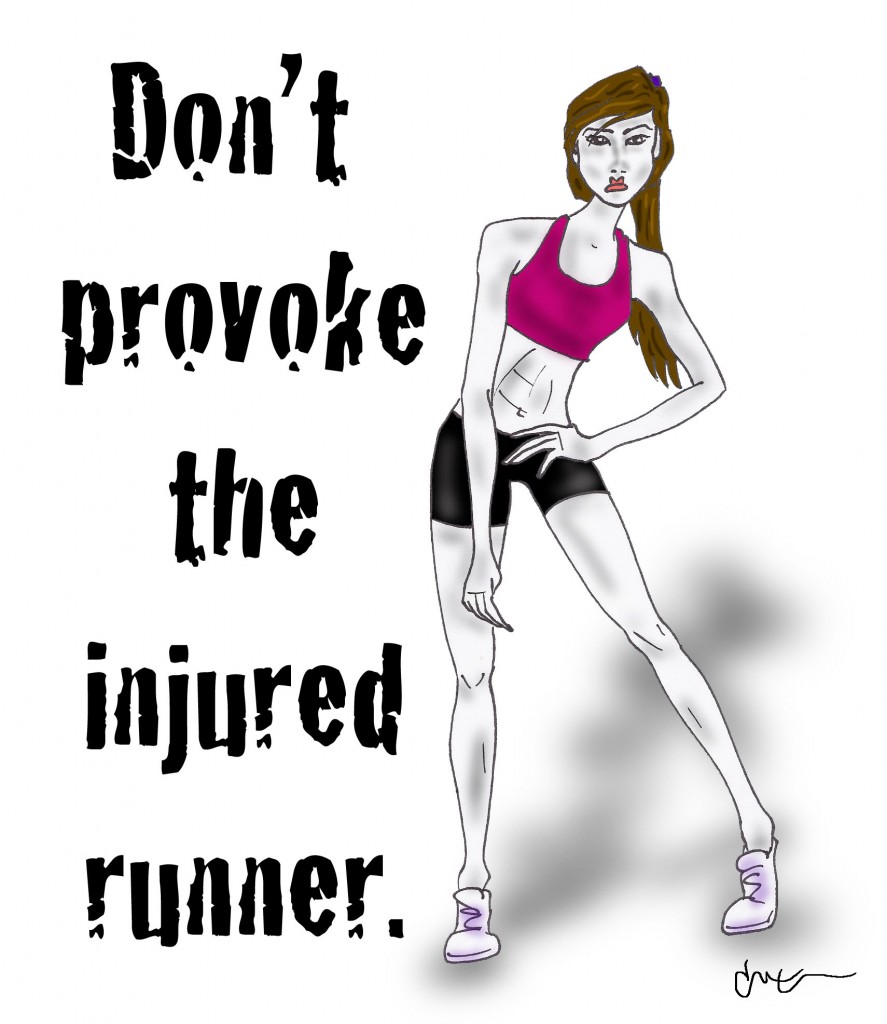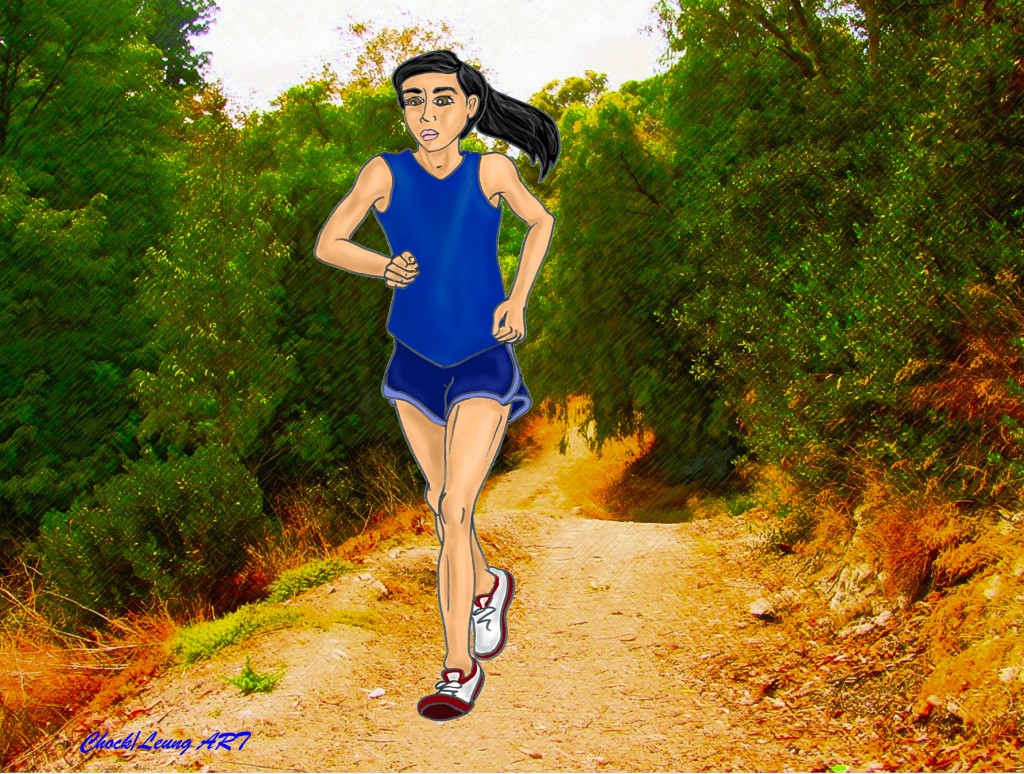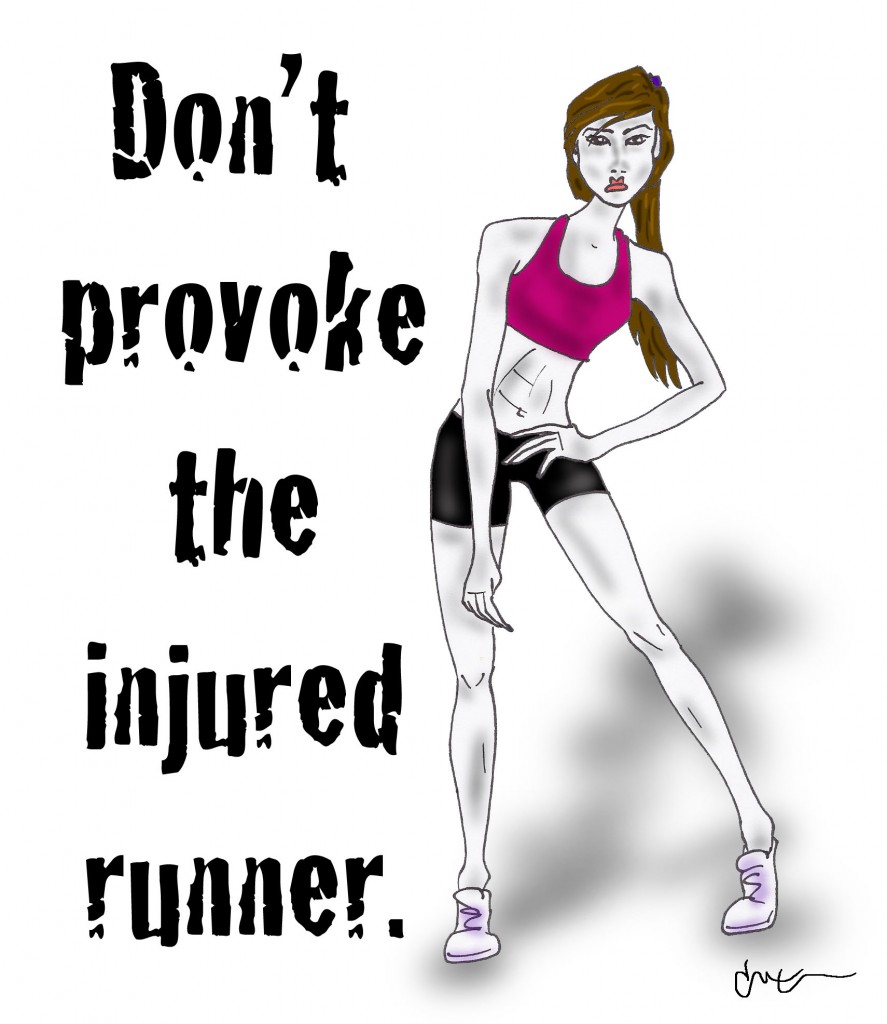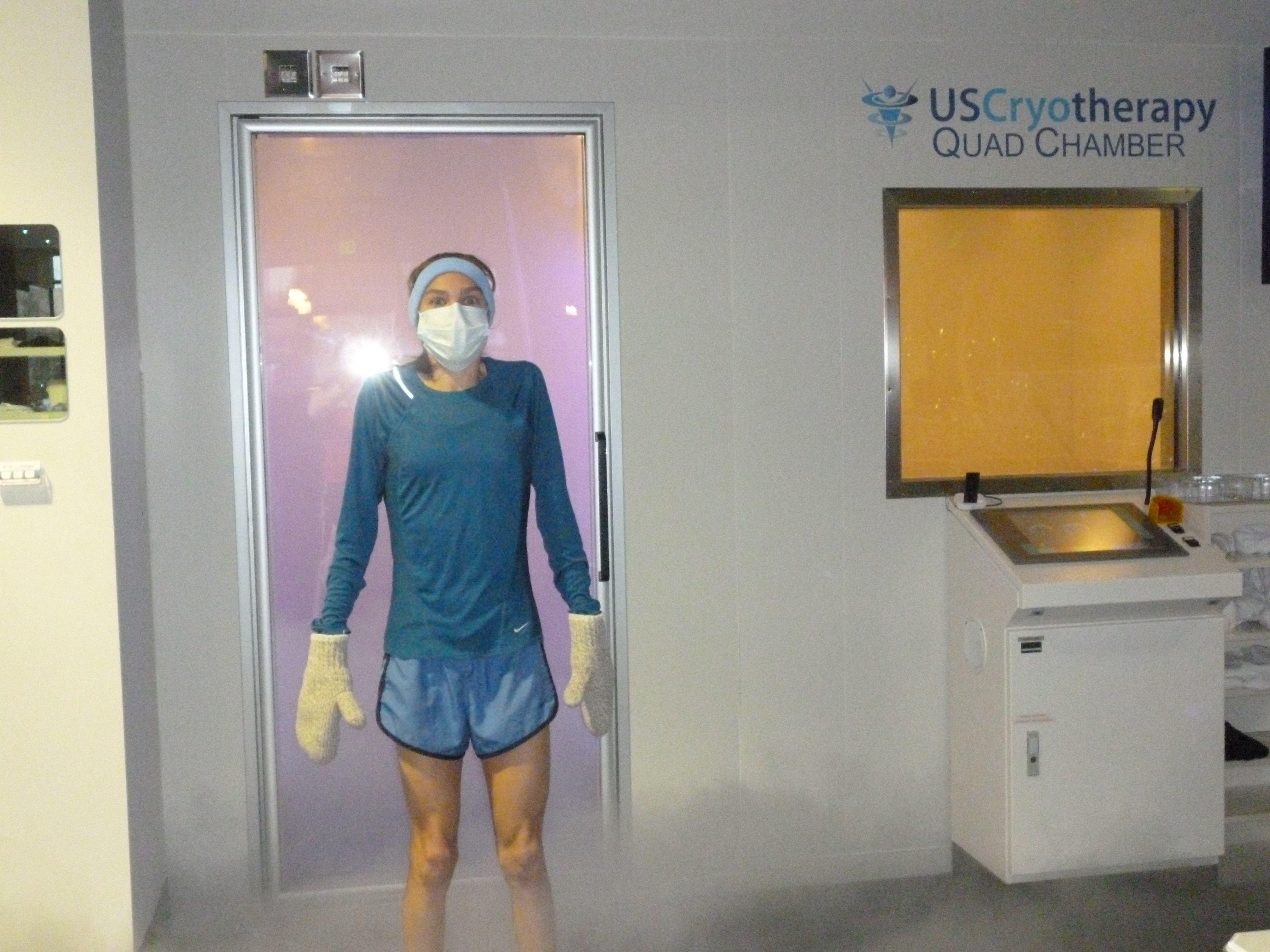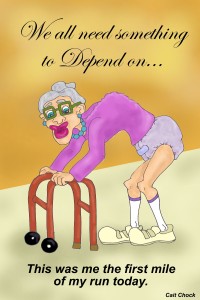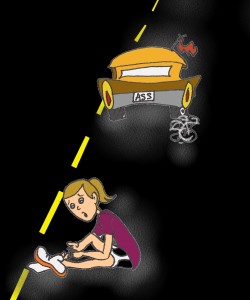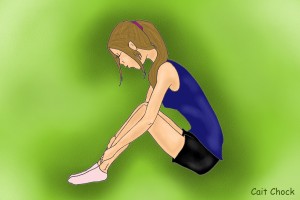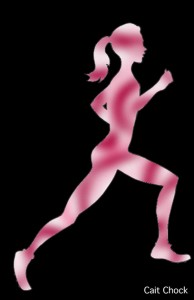We’ve all heard that a shoe is dead once it hits 500 miles, right? But as with any ‘rule of thumb’ that’s a generalization and just as we are each individuals with individual running quirks, these rules need to be tailored to fit the runner.
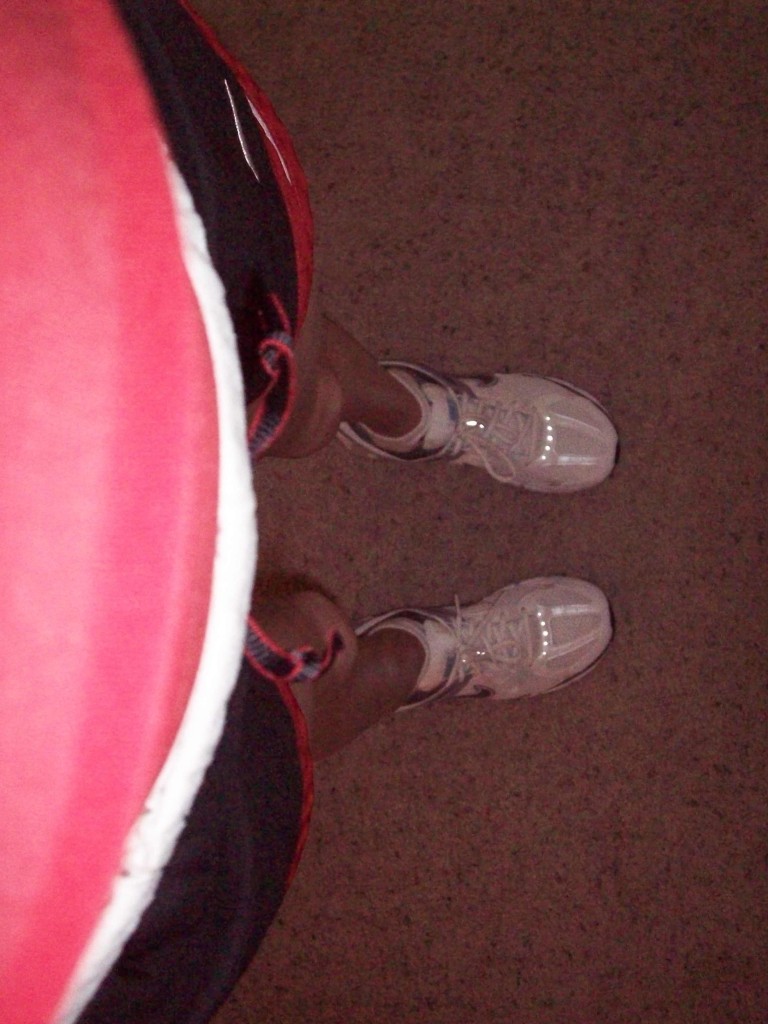
Keeping tabs on how many miles we have run in our shoes is important because it gives us a gauge of when we need to remember to replace them. As in we can remember to get a new pair of shoes BEFORE our body starts to send us reminders in the way of aches, pains, and injuries. As ‘small potatoes’ as it may sound, running in the wrong pair of shoes or a dead pair of shoes account for a high percentage of running injuries. One simple shoe change would solves so many maladies but this ‘minor detail’ often gets overlooked.
Shoes aren’t cheap, of this I know, but saving pennies will leave you paying with injuries. Even though a pair of good running shoes may carry a not so appealing price tag, do keep in mind that with our sport shoes really are the only necessary, big investment. We don’t necessarily NEED the Garmins,so if it comes between picking one or the other lest I remind you the Garmin will get no use if you can’t run due to injury.
But getting back to 500 miles before you need a shoe replacement. This is an estimate and here are some factors that sway that number:
* Foot strike. How you run is going to impact how long your shoes will last. If you tend to be a hard heel striker, run predominantly on outside of your foot, shuffle in your stride, are a heavier runner, over-pronate a lot…all of these are things that will wear down the tread of your shoes faster and thus make it necessary to swap shoes earlier than the 500 mile mark.
* Shoe quality. If you’re serious about running you shouldn’t be running in a pair from the sale bin of Big 5…just saying. It may seem like a cheaper route to for a knock-off pair but it’s a case of quality vs. quantity and in the end you’ll pay double with a crappy pair of kicks: you’ll have to replace them more often and you’ll probably get hurt along the way.
* Minimalism shoes. The whole minimalism movement isn’t just a trending wave it’s like a tsunami by now; yes these lighter than air shoes are quite awesome and can make you feel like you’ve dropped 10 lbs in shoe, but depending on your foot strike they aren’t necessarily the best choice for everyone. Minimalistic shoes and barefoot running can strengthen your feet and lead to positives BUT you need to beware of some things first; you need to gradually integrate using them, think twice if you’re a heavy pronator or supinator, and then keep in mind that with less shoe you’ll probably need to swap them out more often.
* Manufacturers needing profits. Shoe companies make money off of selling shoes, fact. It’s a business after all and truth be told the running shoes of today, while they are advanced in oh so many ways over their decades’ old counterparts, they also wear out faster. The materials are designed to not last forever and over the years their lifespan has shortened. Hey, in the end everyone has to make their profits somehow.
So the 500 mile thing isn’t so cut and dry, it’s got to be adjusted to YOU. Just as with training, each runner is different so you need to learn how to gauge the lifespan of your shoes based on your history. Sometimes that’s tricky to figure out but you learn along the way and when in doubt err on the side of caution…replacing your shoes earlier isn’t going to leave you injured,but wait too long and you could wind up lame.
Outside of counting miles run on shoes an easy way to see how much life is left in them is to just look at the treads on the bottom. Most running shoes are black or darker on the outermost bottom layer…if you start seeing white or areas where that black color is nearly shaven down, the shoe is dead. Even if the spot of wear is only in on specific area (ie: the outside heel) and the rest of the shoe looks brand new, the shoe is dead. Get to know your tread pattern and then you’ll know where to look to find out how much longer your shoe will last.
Some ways to prolong the life of your shoe:
* Buy two at a time and then swap out between the two. It may sound strange but alternating days between two different pairs will keep each one spry for longer.
* Orthotics and cushioned inserts. To a degree these can help eek out a bit more life out of your shoes if you’re blasting through them every 300 miles. Heavy pronators should think of supportive inserts regardless, but it’s actually the cushioning of shoes that breaks down the fastest and leads to you needing a new pair. It’s the cushioning materials in shoes that are eaten away by our miles much faster than the harder, supportive materials used.
Getting rid of a dead pair of shoes if it’s prior to the 500 mile mark might be hard for some to do because it feels like a ‘waste’ of a shoes. But put your running health first and here are some things you can do to recycle the dead ones:
* Use the old pairs for walk-a-around shoes or for when you’re working on the lawn or scooping up dog poop.
* Donate your dead shoes to charity. There are always people without any shoes who would love your old ones; toss the dead shoes through the wash to spruce them up, then offer them up to someone who needs them. I know Julius Achon was always happy to take old shoes and send them off to his children in Uganda, you can visit his site HERE. Nike also has their Reuse-A-Shoe program.
Wow, so much for the whole ‘easy 500 miles life-stamp’ of a shoe right?? 😉
—————
Thanks to Ali at Running With Spatulas for inspiring this post. If you haven’t signed up for her Spatula Runners Virtual Race and pledged to send in your awesome running pick, then DO IT! 🙂 Then you can check out some yummy treats for your post-run refuel…heaven knows I can’t cook or supply and fun recipes. 😉
—————
1) How often do you honestly replace your shoes?
I try to stay right on top of that one, I’ve learned that my body gets cranky when that tread pattern wears thin!
2) What are some reasons you might keep running in a dead shoe too long? (ie: forget, don’t want to spend money, don’t know you need to, etc.)
3) Do you run in any shoe inserts?
Not any more because I’ve worked a lot on my form and my foot strike has changed; I used to need orthotics though for extra support.
4) Where does your shoe’s tread wear thin the fastest? Or do you have no clue…hehe.
Mine is on the outside heel, it’s gotten better over the years though. When I first started running, no joke, I’d burn through a pair of shoes on the heel in a month tops. And back then I’d be hard pressed to think I even kissed 25 miles a week. 😉


